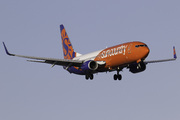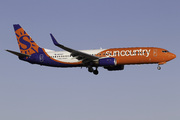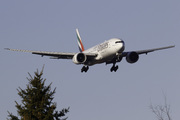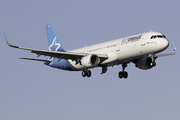Dépêches
Research and Markets: The Middle East Military Air Market - Growing Recognition of Air Assets as a Force Multiplier Boosts Market Prospects
Dépèche transmise le 22 juillet 2011 par Business Wire

Research and Markets: The Middle East Military Air Market - Growing Recognition of Air Assets as a Force Multiplier Boosts Market Prospects
DUBLIN--(BUSINESS WIRE)--Research and Markets (http://www.researchandmarkets.com/research/ab7f46/the_middle_east_mi) has announced the addition of Frost & Sullivan's new report "The Middle East Military Air Market - Revenue Opportunities and Stakeholder Mapping" to their offering.
“The Middle East Military Air Market - Revenue Opportunities and Stakeholder Mapping”
This study covers the state of the Middle East Military Air Market, examining drivers and restraints for growth, challenges, technology, legislation, demand and geographical trends. The base year is 2010 with forecasts running through 2020. The market is further divided into three subsegments including new procurement, upgrade and support. Detailed analysis of six Gulf Cooperation Council (GCC) countries is included.
Growing Recognition of Air Assets as a Force Multiplier Boosts Market Prospects
Due to the increased recognition of advanced air platforms as a force multiplier, Middle Eastern Ministries of Defence (MODs) are acquiring defensive air capability in earnest. The regional military air market is accordingly set to generate revenues of $62.90 billion between 2010 and 2020. The solid rise could be attributed to the growing recognition air superiority as enabler to national security across major regional defence communities.
The Gulf Cooperation Council (GCC) countries are moving towards an integrated air defence network to include air platforms, air defence batteries and air surveillance systems under the Peninsular Shield' initiative; but the progress has been slow, notes the analyst of this research. The use of networked force by the US and European forces in the Gulf War and the latest Iraq and Afghanistan wars have been a startling revelation for Middle Eastern MODs who are now keen on acquiring these capabilities.
Companies to Identify and Fill Gaps in Current Air Defence Inventories
The new procurement surge over 2011-2015 highlights on going big-ticket purchases, particularly in Saudi Arabia and the United Arab Emirates. Political influence weighs heavily in defence acquisition decisions. As a result, most new procurements are being sourced from the United States under Foreign Military Sales (FMS).
There have been efforts to balance this relationship through procurements from elsewhere, including from Europe and Russia. The US and European arms regulations (such as ITAR and End User Monitoring) often restrain the export of sensitive defence technology and capability such as UAVs to the Middle East market, states the analyst. This has been a particular dampener for the Western defence companies who want to be part of the development success story in the region.
For more information visit http://www.researchandmarkets.com/research/ab7f46/the_middle_east_mi
- 07:25 Friedrichshafen 2024 : Robin "toujours présent et pour longtemps"
- 07:11 Friedrichshafen 2024 : Beringer présente au salon
- 07:01Friedrichshafen 2024 : la FFPLUM dément le passage de tous les ULM 3 axes à 600kg
- 06:44 Friedrichshafen 2024 : visite d'un Pilatus PC-12 (photos)
- 17/04 Friedrichshafen 2024 : Cirrus Aircraft présente son SR G7
- 17/04 Friedrichshafen 2024 : Piper présente son M700 Fury
- 17/04 Friedrichshafen 2024 : Junkers dévoile son A50 Heritage
- 17/04 Friedrichshafen 2024 : la société E-Props présente au salon
- 17/04 Le 30e salon de Friedrichshafen a ouvert ses portes
- 15/04 Airbus : commandes et livraisons de mars 2024
- 15/04 easyJet renforce ses dessertes depuis la France vers Budapest
- 15/04 Vueling inaugure sa liaison entre Orly et Heathrow
- 12/04 British Airways ouvre les candidatures pour son programme cadets Speedbird Pilot Academy
- 12/04 Icelandair et Expedia annoncent un nouveau partenariat
- 12/04 Turkish Airlines : résultats 2023
- 12/04 easyJet annonce deux nouvelles lignes depuis Lyon
- 12/04 Le premier Embraer E190 P2F fait son vol inaugural
- 12/04 Volotea obtient l'agrément complet pour son Système de Management de la Sécurité
- 12/04 easyJet et l'UNICEF lancent la campagne "Every Child Can Fly"
- 12/04 Emirates fête ses 30 ans de présence à l'aéroport de Nice







